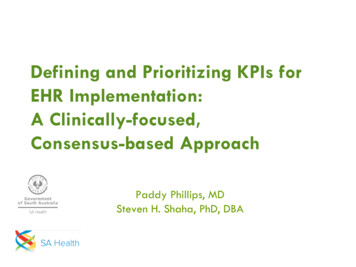
Transcription
Defining and Prioritizing KPIs forEHR Implementation:A Clinically-focused,Consensus-based ApproachPaddy Phillips, MDSteven H. Shaha, PhD, DBA
Bio and DisclosuresPaddy Phillips, MDProfessor, Chief Medical Officer and Public Health Coordinator, South Australia HealthClinical Lead for South Australia Electronic Health Record (EPAS)History: Head of Medicine, Flinders University, Flinders Medical Centre and Repatriation GeneralHospital, AdelaideChair of the South Australian Clinical SenateInaugural Chair of the South Australian Statewide Clinical Network in CardiologyMember and chair of the National Health and Medical Research CouncilCommittees for: Australian Government Royal Australian College of Physicians Heart FoundationSenior clinical academic posts at: University of Melbourne Oxford University Adjunct Professor of Medicine at Duke University, USAPersonal Mission:Build a better health system through innovation, collaboration and leadership
Bio and DisclosuresSteven H. Shaha, PhD, DBAProfessor, Center for Public Policy & Administration, Harvard, University of Utah, Zayed Univ (UAE)Principal Outcomes Consultant, Quality & Outcomes Team, AllscriptsOutcomes Researcher and Continuous Improvement Expert100 peer-reviewed publications in 30 Journals, 200 peer-reviewed presentations, 2 booksProfessor or Lecturer or at 14 professional academies and graduate schools, including Harvard,MIT, UMass, Columbia, Cornell, UCLAAdvisory and consulting to over 50 non-healthcare organizations, including e.g. Ritz-Carlton, Disney,IBM, AT&T, Coca-Cola, Time Warner, Kodak, Johnson & Johnson, Marriott, New LineCinemaAdvisory and consulting work for 10 governments in Europe (e.g. France, Spain, United Kingdom,Switzerland, Netherlands) and Asia (e.g. Singapore and Malaysia)Co-author of the Malcolm Baldrige National Quality Award for Healthcare, and advisor to threegovernments on defining and establishing national quality awardsEmployment history includes: UCLA Medical Center, RAND Corporation, Intermountain Healthcare,Gartner Group, Eclipsys Corporation, Inst Integrated Outcomes, Allscripts and othersAcademic Appointments – current: Center for Public Policy and Administration – Univ of Utah,Harvard University (lecturer), Zayed University (prof)Education:PhD in Research Methods & Applied StatisticsDBA in Business Administration (PhD)MA, MEd, BS
Steven H. Shaha, PhD, DBA
DischargeandHealthDiscSe hargpseIcaisreRe ns.Acco .qugnireitidonDInfHaec VT/ndVTtio-onves( ErHCsaManndAI)agCemomenm FallunstoPic arfPBleooot ssu tiodUt enti re U nilis allly I ceratsDr ion nfectug /T/D ran io.AcrusEm uteg I fusioMerntyoer nsgeaccnctioy D ardSep ial I tro nsknaPrAn rtm farc e Caobentlertm icot T ion eaLis(Aguht/lat rou MIPr)ob ion ghpuMlean t.maList M geman enag te.PatientClinical Indicators and KPIs180160140120163 157 156153 151141 141 141 139 135 133131121 121 117100806040200
Outline1.The Context South Australia’s EMR/EHR initiative Focus on KPIs and tangibility of implementation impact Clinical Initiative versus technology project2.Outcomes, Clinical Indicators, Outcomes Toolkits and KPIs Outcomes and Clinical Indicators as presented Outcomes Toolkits for prioritization Consensus as a driver Cannot do everything for everyone one so prioritization as guide Prioritize most pressing needs first Phased strategy3.Consensus methodology 4.Results 5.TOP 5, Top 15, 3 phasesKPIs and Clinical Indicators 6.Who was invitedMethodology: Handhelds, scoring, sharingUniqueness and leadership of the approachInternational contextFinal Comments
Outline1.The Context South Australia’s EMR/EHR initiative Focus on KPIs and tangibility of implementation impact Clinical Initiative versus technology project2.Outcomes, Clinical Indicators, Outcomes Toolkits and KPIs Outcomes and Clinical Indicators as presented Outcomes Toolkits for prioritization Consensus as a driver Cannot do everything for everyone one so prioritization as guide Prioritize most pressing needs first Phased strategy3.Consensus methodology 4.Results 5.TOP 5, Top 15, 3 phasesKPIs and Clinical Indicators 6.Who was invitedMethodology: Handhelds, scoring, sharingUniqueness and leadership of the approachInternational contextFinal Comments
South Australia’s EMR/EHR initiativeSystem Selection: Clinical Focused Outcomes Proven Not “one size fits all” Programmable, adaptable Does not require proscribed implementation8
Focus on KPIs and tangibility ofimplementation impactPerformance and Accountability Focus: Aim and Guide successful implementation Data to quantify impact and ROI Feedback to enable and reward continuous improvement9
Clinical Initiative versus technology projectClinical Perspective:NOT a technology project10
Outline1.The Context South Australia’s EMR/EHR initiative Focus on KPIs and tangibility of implementation impact Clinical Initiative versus technology project2.Outcomes, Clinical Indicators, Outcomes Toolkits and KPIs Outcomes and Clinical Indicators as presented Outcomes Toolkits for prioritization Consensus as a driver Cannot do everything for everyone one so prioritization as guide Prioritize most pressing needs first Phased strategy3.Consensus methodology 4.Results 5.TOP 5, Top 15, 3 phasesKPIs and Clinical Indicators 6.Who was invitedMethodology: Handhelds, scoring, sharingUniqueness and leadership of the approachInternational contextFinal Comments
The Dynamics in HealthcarePressure on every aspect of performance“Do morewithless.”“Meaningful use& futurevalue-basedpurchasing.”“Variable demandwith fixed capacity &poor patient flow.”
The process didn’t change.It’s the Outcomes that matter.
OUTCOMES AREWHYWE DO WHAT WE DO16
Understanding and Quantifying ValueFive outcomes categoriesClinical QualityTo maximize regulatorycompliance to bestpractices (EBM), clinicalbenefits, reduce medicalerrors, medication errors,adverse drug eventsAdoptionTo increase Doctor andstaff adoptionConstituentSatisfactionTo increase patient,Doctor, staff satisfactionPatientsEfficiencyTo reduce Lab,Radiology, and ancillarysupport service turnaround timesCost-EffectivenessTo reduce cost andpractice variation
KPI FoundationsCategories of KPIs Clinical Indicators – Higher quality, better safetyEfficiency – Less waste, less effortFinancial – Less cost-per-case or higher cost-avoidanceAdoption – Better uptake, traction, system useSatisfaction – Happier staff, employees, patients
Examples19
Compliance with Evidence-Based VTE Prophylaxis97.4% Reduced Alerts (p .001)145.3% Increased Assessments (p .001)139.6% Improved Assessment Rate (p .001)Alerts for Missing AssessmentImproved 0002000150001500VTE AssessmentsNo Assessment10000100050005000012345With CPOE and traditional CDS678910 11 12 13 14 15 16MonthWith Outcomes Toolkit incl. Advanced CDS Order SetsMissing Assessment Alert
Statistically Significant Impact on VTE RateDVT/VTE Rate per Bed DayIntelligent Order Set95%ConfidenceInterval62.6% decrease inmean DVT/VTE rate (p .001).From mean rate of .431 to .161.Mean Rate95%ConfidenceInterval1 approximately3579 30211 fewer13 patients15 17 19 21That’ssuffering from VTEs each year *Week2325 736,578 0.8 Days reduced mean LOS (p .001)2729313335(AUD) reduced cost-per-case* (p .001)* Annualized for Hips at risk only, quantified at mean organization-computed variable costs of 2,439/case.Control limits reflect Poisson distribution.3739
DRG 470 - Major joint replacement or reattachment of lower extremity w/o MCCFor top 50 surgical DRGs collectively:Each bubble represents a major surgeon,and bubble size reflects case volume.Post LOSPre LOSAvg Variable Cost / Case 11,000 16% decrease in Cost/Case ( 1,315/case) 2% decrease in Length of Stay 3.1 Million avoided in Cost-per-Case annually (AUD)AND 25.6% decrease in Readmissions 14.2% decrease in Mortality Rate 10,500 10,000 9,500PrePostCost/Case 9,000 8,500Cost/Case 8,000 7,500 7,0002.02.53.03.54.0Length of Stay4.55.0
Differentiator #1: Real-Time Outcomes OptimizationBest care and best scores while the patient is still thereThe Power to Change OutcomesThe best in advanced Clinical Decision SupportThe Evolution ofHealth Care rrentSynchronousCareFrom DoctorsClinical Intelligence andAutomated AssessmentsFrom CaregiversExtracted from multi-disciplinary documentationImprovedOutcomesIndividually andcollectivelyFrom SystemsContinuous ClinicalDecision Support EngineNotify“Our” Recommended Treatmentse.g. Order sets, pathways, algorithms, evidence-based medicine,inter-disciplinary documentation templatesFor DoctorsFor DoctorsFor CaregiversFor OthersProviding the best care and achievingoptimal quality and performanceFor CaregiversFor Others
Significant Reduction in Fall RatesAchieved through Advanced CDS, smart order sets and clinical documentation95%ConfidenceIntervals5.29 12-mo baselinepre-implementation83.6% reductionin Falls with Injuries(p .001)Statistically significantDownward trend (p .001)95%ConfidenceIntervals1 2 3 4 5 6 7 8 9 10 11 12 13 14 15 16 17 18 19 20 21 22 23 24 25 26 27 28 29 30 31 32That’s approximately140 fewer patientsMonthsuffering falls with injuries each year.And 1.5 M 3-year impact in cost-per-case(AUD)At an estimated at 11,042 cost per fall.11 Studer, Quint. Best Practices: Serious About Service. Health Executive, Nov 2007Lower confidence intervalincludes Zero (p .0001)
Significant Reduction in Pressure Ulcer RateAchieved through Advanced CDS, smart order sets and clinical documentation69.0% reduction in Stage 3 & 4Acquired Pressure Ulcers (p .001)7.62 / 1,000 pdbaselineStatisticallySignificanttrend (p .001)95%ConfidenceIntervals2.39 / 1,000 pdachieved95%ConfidenceIntervals12345678910 11 12 13 14 15 16 17 18 19 20Approximately 167 fewer patients acquiringstage 3 or 4 pressure ulcers each year. 2.2 M - 14.8 M reduced cost-per-case1 (AUD)(1) DEPARTMENT OF HEALTH AND HUMAN SERVICES, Centers for Medicare & Medicaid Services, 42 CFR Parts 411, 412, 413, and 489. Medicare Program; ChangesHospital Inpatient Prospective Payment Systems and Fiscal Year 2008 Rates. Page 47205(3) 2004 DRG manual. Average of MDC 009 (pressure ulcers) and DRG 271 (skin ulcers) charges ( 12,922 and 16,724 respectively) divided by charge to cost ratio of 2.44.13 quartersat Zero
Outcomes ToolkitsMonitoring,Surveillance,Reporting andAnalyticsBest PracticeWorkflowsOrder Sets ontentAutomatedRiskAssessmentsand Alerts
Outcomes Toolkits Stroke Care FallsAMI – Acute Myocardial Infarction Surgical Process Efficacy MetricsHF – Heart Failure Emergency Department throughput andCAD – ARRA/MUQuality MeasuresCAP – Community Acquired Pneumonia Management of Potentially InfectiousVAP – Ventilator Acquired PneumoniaPatient (MRSA, VRE, MDRO, and C-Diff)CRBSI – Catheter-related Blood Stream Hand-offs and CommunicationInfectionsMonitoring, Pain ManagementH1N1 – Swine Flu (Epidemics andSurveillance,BestPractice Staphylococcusaureus SepticemiaPandemics)Reporting andWorkflows CPOE CertificationDiabetes – Blood GlucoseAnalytics Drug-Drug InteractionsPressure Ulcers Problem List ManagementPediatric Asthma Immunization & WellnessPediatrics (ARRA/MU) Sepsis RecognitionOncology: Model structureforSetsAdverseOrderandIntegrated Exchangeof Key Clinical InformationEventsDocumentationEvidence-based Doctor Documentation – Time SavingVTE / DVTTemplatesContent History& PhysicalCatheter Associated UTIs Progress NoteOb / Gyn Consult NoteInpatient Blood Glucose ManagementAutomatedPatient Discharge & Discharge InstructionsRisk Blood Utilization / Transfusions Anticoagulation ManagementAssessmentsPrimary Careand AlertsProblem List
Clinical Indicators and KPI FoundationsGuiding/channeling Clinician Creativity Outcomes Toolkits (i.e. Outcomes Toolkits) provide an idealbasis for KPIs: Focus on key issues or goals Implementable Metrics defined and achievable, covering the breadth of KPI categories
Outline1.The Context South Australia’s EMR/EHR initiative Focus on KPIs and tangibility of implementation impact Clinical Initiative versus technology project2.Outcomes, Clinical Indicators, Outcomes Toolkits and KPIs Outcomes and Clinical Indicators as presented Outcomes Toolkits for prioritization Consensus as a driver Cannot do everything for everyone one so prioritization as guide Prioritize most pressing needs first Phased strategy3.Consensus methodology 4.Results 5.TOP 5, Top 15, 3 phasesKPIs and Clinical Indicators 6.Who was invitedMethodology: Handhelds, scoring, sharingUniqueness and leadership of the approachInternational contextFinal Comments
Process Evening scheduled Attendees / Clinicians involved and engaged Voting technology Results30
Handhelds31
Full List of Clinical Indicators for Context Stroke Care FallsAMI – Acute Myocardial Infarction Surgical Process Efficacy MetricsHF – Heart Failure Emergency Department throughput andCAD – ARRA/MUQuality MeasuresCAP – Community Acquired Pneumonia Management of Potentially InfectiousVAP – Ventilator Acquired PneumoniaMonitoring,Patient (MRSA, VRE, MDRO, and C-Diff)CRBSI – Catheter-related BloodSurveillance,StreamPractice and Communication BestHand-offsReporting andWorkflowsInfections Pain ManagementH1N1 – Swine Flu (Epidemics andAnalytics Staphylococcus aureus SepticemiaPandemics) CPOE CertificationDiabetes – Blood Glucose Drug-Drug InteractionsPressure Ulcers ProblemList ManagementOrder Sets andIntegratedPediatric Asthma Immunization& WellnessEvidence-basedPediatrics (ARRA/MU) Documentation SepsisContentRecognitionOncology: Model structureTemplatesfor Adverse Exchange of Key Clinical InformationEvents Doctor Documentation – Time SavingVTE / DVT History & PhysicalAutomatedCatheter Associated UTIsRisk Progress NoteOb / GynAssessments Consult NoteInpatient Blood Glucose Managementand Alerts Patient Discharge & Discharge InstructionsBlood Utilization / Transfusions Anticoagulation ManagementPrimary CareProblem List
One Clinical Indicator at a Time for VotingDVT/VTE Rate for Order Set (protocols) Use Exception Rates within Order Set Use Rate for Risk Assessments Rate for VTE Prophylaxis VTE Rate33
Scoring Recaps for Each Clinical Indicator Cumulative score of 5s, 4s etc.34
Outline1.The Context South Australia’s EMR/EHR initiative Focus on KPIs and tangibility of implementation impact Clinical Initiative versus technology project2.Outcomes, Clinical Indicators, Outcomes Toolkits and KPIs Outcomes and Clinical Indicators as presented Outcomes Toolkits for prioritization Consensus as a driver Cannot do everything for everyone one so prioritization as guide Prioritize most pressing needs first Phased strategy3.Consensus methodology 4.Results 5.TOP 5, Top 15, 3 phasesKPIs and Clinical Indicators 6.Who was invitedMethodology: Handhelds, scoring, sharingUniqueness and leadership of the approachInternational contextFinal Comments
DischargeandHealthDiscSe hargpseIcaisreRe ns.Acco .qugnireitidonDInfHaec VT/ndVTtio-onves( ErHCsaManndAI)agCemomenm FallunstoPic arfPBleooot ssu tiodUt enti re U nilis allly I ceratsDr ion nfectug /T/D ran io.AcrusEm uteg I fusioMerntyoer nsgeaccnctioy D ardSep ial I tro nsknaPrAn rtm farc e Caobentlertm icot T ion eaLis(Aguht/lat rou MIPr)ob ion ghpuMlean t.maList M geman enag te.PatientClinical Indicators180160140120163 157 156153 151141 141 141 139 135 133131121 121 117100806040200
DischargeandHealthDiscSe hargpseIcaisreRe ns.Acco .qugnireitidonDInfHaec VT/ndVTtio-onves( ErHCsaManndAI)agCemomenm FallunstoPic arfPBleooot ssu tiodUt enti re U nilis allly I ceratsDr ion nfectug /T/D ran io.AcrusEm uteg I fusioMerntyoer nsgeaccnctioy D ardSep ial I tro nsknaPrAn rtm farc e Caobentlertm icot T ion eaLis(Aguht/lat rou MIPr)ob ion ghpuMlean t.maList M geman enag te.PatientClinical IndicatorsPhase 1180160140120163 157 156153 151141 141 141 139 135 133131121 121 117100806040200
DischargeandHealthDiscSe hargpseIcaisreRe ns.Acco .qugnireitidonDInfHaec VT/ndVTtio-onves( ErHCsaManndAI)agCemomenm FallunstoPic arfPBleooot ssu tiodUt enti re U nilis allly I ceratsDr ion nfectug /T/D ran io.AcrusEm uteg I fusioMerntyoer nsgeaccnctioy D ardSep ial I tro nsknaPrAn rtm farc e Caobentlertm icot T ion eaLis(Aguht/lat rou MIPr)ob ion ghpuMlean t.maList M geman enag te.PatientClinical IndicatorsPhase 1Phase 2180160140120163 157 156153 151141 141 141 139 135 133131121 121 117100806040200
DischargeandHealthDiscSe hargpseIcaisreRe ns.Acco .qugnireitidonDInfHaec VT/ndVTtio-onves( ErHCsaManndAI)agCemomenm FallunstoPic arfPBleooot ssu tiodUt enti re U nilis allly I ceratsDr ion nfectug /T/D ran io.AcrusEm uteg I fusioMerntyoer nsgeaccnctioy D ardSep ial I tro nsknaPrAn rtm farc e Caobentlertm icot T ion eaLis(Aguht/lat rou MIPr)ob ion ghpuMlean t.maList M geman enag te.PatientClinical IndicatorsPhase 1Phase 2180160140120163 157 156153 151Phase 3141 141 141 139 135 133131121 121 117100806040200
DischargeandHealthDiscSe hargpseIcaisreRe ns.Acco .qugnireitidonDInfHaec VT/ndVTtio-onves( ErHCsaManndAI)agCemomenm FallunstoPic arfPBleooot ssu tiodUt enti re U nilis allly I ceratsDr ion nfectug /T/D ran io.AcrusEm uteg I fusioMerntyoer nsgeaccnctioy D ardSep ial I tro nsknaPrAn rtm farc e Caobentlertm icot T ion eaLis(Aguht/lat rou MIPr)ob ion ghpuMlean t.maList M geman enag te.PatientClinical IndicatorsPhase 1180160140120163 157 156153 151Phase 2Phase 3141 141 141 139 135 133131121 121 117100806040200
Outline1.The Context South Australia’s EMR/EHR initiative Focus on KPIs and tangibility of implementation impact Clinical Initiative versus technology project2.Outcomes, Clinical Indicators, Outcomes Toolkits and KPIs Outcomes and Clinical Indicators as presented Outcomes Toolkits for prioritization Consensus as a driver Cannot do everything for everyone one so prioritization as guide Prioritize most pressing needs first Phased strategy3.Consensus methodology 4.Results 5.TOP 5, Top 15, 3 phasesKPIs and Clinical Indicators 6.Who was invitedMethodology: Handhelds, scoring, sharingUniqueness and leadership of the approachInternational contextFinal Comments
Clinical Indicators and KPI FoundationsEngagement Maximizes Adoption All had a vote – consensusAll listened to – leadershipRational Clinically-appropriate Priorities – mission-basedManageable pathway to success
Clinical Indicators and KPI FoundationsPrioritization “Less is More” – Goal is to select the few and focal KPIs: 5-10 Prioritize KPI selection by Strategic importanceImpactful to clinical or efficiency issuesAchievableMeasureable – ease of tracking and reporting Ensuring contributors that KPI suggestions NOT included are in“parking lot” for later addition/replacement
Recommended Early Stage KPIsby Clinical Indicator44
Rate of Use for Discharge Order SetsDischargecareHealthandDiscSe hargpseIisRe ns.Acco .qugnireitidD V onInHafendct T/Vio-ons TEve(HrsMCAanandI)agCoemmenm Fallutoni sPrcfBloo Po essu atiotdUt enti re U nilis allly I ceratsDr ion nfectug /Tr/Dan io.AcrsugfuEm utesInMerte ionsygeranc ocacty D rdioSep ial I tro nsknaPrAn rtm farc e Caobentlertiom icotn eLis agu Thro (AMt/lPr atio ugh I)obnM putle.amLis nag .t M eman enag te.PatientPatient Discharge and DCInstructions180160140120163 157 156153 151100141 141 141 139 135 13313180121 121 1176040200 Rate for Incomplete Discharge Documentation or RequiredElements Readmission Rates for Incomplete Instructions orPreparation/Procedures45
Rate of Use for Discharge Order SetsDischargecareHealthandDiscSe hargpseIisRe ns.Acco .qugnireitidD V onInHafendct T/Vio-ons TEve(HrsMCAanandI)agCoemmenm Fallutoni sPrcfBloo Po essu atiotdUt enti re U nilis allly I ceratsDr ion nfectug /Tr/Dan io.AcrsugfuEm utesInMerte ionsygeranc ocacty D rdioSep ial I tro nsknaPrAn rtm farc e Caobentlertiom icotn eLis agu Thro (AMt/lPr atio ugh I)obnM putle.amLis nag .t M eman enag te.PatientPatient Discharge and DCInstructions180160140120163 157 156153 151100141 141 141 139 135 13313180121 121 1176040200 Rate for Incomplete Discharge Documentation or RequiredElements Readmission Rates for Incomplete Instructions orPreparation/Procedures46
Sepsis RateDischargeandcareSepsis RecognitionHealthDiscSe hargpseIisRe ns.Acco .qugnireitidD V onInHafendct T/Vio-ons TEve(HrsMCAanandI)agCoemmenm Fallutoni sPrcfBloo Po essu atiotdUt enti re U nilis allly I ceratsDr ion nfectug /Tr/Dan io.AcrsugfuEm utesInMerte ionsygeranc ocacty D rdioSep ial I tro nsknaPrAn rtm farc e Caobentlertiom icotn eLis agu Thro (AMt/lPr atio ugh I)obnM putle.amLis nag .t M eman enag te.Patient180160140120163 157 156153 151100141 141 141 139 135 13313180121 121 1176040200 Rate for Sepsis-related Complications and/or Mortalities due toUnrecognized or Delayed Recognition of Sepsis Rate of Sepsis Order Set Use Rate of Use of Sepsis Bundle47
Sepsis RateDischargeandcareSepsis RecognitionHealthDiscSe hargpseIisRe ns.Acco .qugnireitidD V onInHafendct T/Vio-ons TEve(HrsMCAanandI)agCoemmenm Fallutoni sPrcfBloo Po essu atiotdUt enti re U nilis allly I ceratsDr ion nfectug /Tr/Dan io.AcrsugfuEm utesInMerte ionsygeranc ocacty D rdioSep ial I tro nsknaPrAn rtm farc e Caobentlertiom icotn eLis agu Thro (AMt/lPr atio ugh I)obnM putle.amLis nag .t M eman enag te.Patient180160140120163 157 156153 151100141 141 141 139 135 13313180121 121 1176040200 Rate for Sepsis-related Complications and/or Mortalities due toUnrecognized or Delayed Recognition of Sepsis Rate of Sepsis Order Set Use Rate of Use of Sepsis Bundle48
Rate for Order Set (protocols) UseDischargeandcareDVT/VTEHealthDiscSe hargpseIisRe ns.Acco .qugnireitidD V onInHafendct T/Vio-ons TEve(HrsMCAanandI)agCoemmenm Fallutoni sPrcfBloo Po essu atiotdUt enti re U nilis allly I ceratsDr ion nfectug /Tr/Dan io.AcrsugfuEm utesInMerte ionsygeranc ocacty D rdioSep ial I tro nsknaPrAn rtm farc e Caobentlertiom icotn eLis agu Thro (AMt/lPr atio ugh I)obnM putle.amLis nag .t M eman enag te.Patient180160140120163 157 156153 151100141 141 141 139 135 13313180121 121 1176040200 Exception Rates within Order Set Use Rate for Risk Assessments Rate for VTE Prophylaxis VTE Rate49
Rate for Order Set (protocols) UseDischargeandcareDVT/VTEHealthDiscSe hargpseIisRe ns.Acco .qugnireitidD V onInHafendct T/Vio-ons TEve(HrsMCAanandI)agCoemmenm Fallutoni sPrcfBloo Po essu atiotdUt enti re U nilis allly I ceratsDr ion nfectug /Tr/Dan io.AcrsugfuEm utesInMerte ionsygeranc ocacty D rdioSep ial I tro nsknaPrAn rtm farc e Caobentlertiom icotn eLis agu Thro (AMt/lPr atio ugh I)obnM putle.amLis nag .t M eman enag te.Patient180160140120163 157 156153 151100141 141 141 139 135 13313180121 121 1176040200 Exception Rates within Order Set Use Rate for Risk Assessments Rate for VTE Prophylaxis VTE Rate50
Rate for Order Set UseDischargecareHealthandDiscSe hargpseIisRe ns.Acco .qugnireitidD V onInHafendct T/Vio-ons TEve(HrsMCAanandI)agCoemmenm Fallutoni sPrcfBloo Po essu atiotdUt enti re U nilis allly I ceratsDr ion nfectug /Tr/Dan io.AcrsugfuEm utesInMerte ionsygeranc ocacty D rdioSep ial I tro nsknaPrAn rtm farc e Caobentlertiom icotn eLis agu Thro (AMt/lPr atio ugh I)obnM putle.amLis nag .t M eman enag te.PatientHealthcare AcquiredInfections - HCAIs180160140120163 157 156153 151100141 141 141 139 135 13313180121 121 1176040200 Exception Rates within Order Set Use Infection Rates Prophylaxis Rates Bundle Compliance Rates51
Rate for Order Set UseDischargecareHealthandDiscSe hargpseIisRe ns.Acco .qugnireitidD V onInHafendct T/Vio-ons TEve(HrsMCAanandI)agCoemmenm Fallutoni sPrcfBloo Po essu atiotdUt enti re U nilis allly I ceratsDr ion nfectug /Tr/Dan io.AcrsugfuEm utesInMerte ionsygeranc ocacty D rdioSep ial I tro nsknaPrAn rtm farc e Caobentlertiom icotn eLis agu Thro (AMt/lPr atio ugh I)obnM putle.amLis nag .t M eman enag te.PatientHealthcare AcquiredInfections - HCAIs180160140120163 157 156153 151100141 141 141 139 135 13313180121 121 1176040200 Exception Rates within Order Set Use Infection Rates Prophylaxis Rates Bundle Compliance Rates52
180160Falls with Injuries140163 157 156153 151141 141 141 139 135 133131120121 121 11710080604020careHealth Rate for Risk AssessmentsPatientDischargeandDiscSe hargpseIisRe ns.Acco .qugnireitidD V onInHafendct T/Vio-ons TEve(HrsMCAanandI)agCoemmenm Fallutoni sPrcfBloo Po essu atiotdUt enti re U nilis allly I ceratsDr ion nfectug /Tr/Dan io.AcrsugfuEm utesInMerte ionsygeranc ocacty D rdioSep ial I tro nsknaPrAn rtm farc e Caobentlertiom icotn eLis agu Thro (AMt/lPr atio ugh I)obnM putle.amLis nag .t M eman enag te.0 Rate for Documentation of History of Falls Rate for Incidence (i.e. with and without injury) Rate by Severity and Repercussions (e.g. LOS) Rate for compliance and documentation of preventive care (i.e.Nursing) Rate for Nursing Protocol and Order Set Use Exception Rates within Order Set Use53
180160Falls with Injuries140163 157 156153 151141 141 141 139 135 133131120121 121 11710080604020careHealth Rate for Risk AssessmentsPatientDischargeandDiscSe hargpseIisRe ns.Acco .qugnireitidD V onInHafendct T/Vio-ons TEve(HrsMCAanandI)agCoemmenm Fallutoni sPrcfBloo Po essu atiotdUt enti re U nilis allly I ceratsDr ion nfectug /Tr/Dan io.AcrsugfuEm utesInMerte ionsygeranc ocacty D rdioSep ial I tro nsknaPrAn rtm farc e Caobentlertiom icotn eLis agu Thro (AMt/lPr atio ugh I)obnM putle.amLis nag .t M eman enag te.0 Rate for Documentation of History of Falls Rate for Incidence (i.e. with and without injury) Rate by Severity and Repercussions (e.g. LOS) Rate for compliance and documentation of preventive care (i.e.Nursing) Rate for Nursing Protocol and Order Set Use Exception Rates within Order Set Use54
Outline1.The Context South Australia’s EMR/EHR initiative Focus on KPIs and tangibility of implementation impact Clinical Initiative versus technology project2.Outcomes, Clinical Indicators, Outcomes Toolkits and KPIs Outcomes and Clinical Indicators as presented Outcomes Toolkits for prioritization Consensus as a driver Cannot do everything for everyone one so prioritization as guide Prioritize most pressing needs first Phased strategy3.Consensus methodology 4.Results 5.TOP 5, Top 15, 3 phasesKPIs and Clinical Indicators 6.Who was invitedMethodology: Handhelds, scoring, sharingUniqueness and leadership of the approachInternational contextFinal Comments
Lessons Learned Clinical Project NOT IT Trust clinicians Phase by clinician operability56
DischargeandHealthDiscSe hargpseIcaisreRe ns.Acco .qugnireitidonDInfHaec VT/ndVTtio-onves( ErHCsaManndAI)agCemomenm FallunstoPic arfPBleooot ssu tiodUt enti re U nilis allly I ceratsDr ion nfectug /T/D ran io.AcrusEm uteg I fusioMerntyoer nsgeaccnctioy D ardSep ial I tro nsknaPrAn rtm farc e Caobentlertm icot T ion eaLis(Aguht/lat rou MIPr)ob ion ghpuMlean t.maList M geman enag te.PatientClinical IndicatorsPhase 1180160140120163 157 156153 151Phase 2Phase 3141 141 141 139 135 133131121 121 117100806040200
Defining and Prioritizing KPIs forEHR Implementation:A Clinically-focused,Consensus-based ApproachPaddy Phillips, MDSteven H. Shaha, PhD, DBA
Additional Concepts60
Clinical Adoption Success Factors Executive InvolvementEffective Governance StructureGoal AlignmentDoctor/Clinician InvolvementCommunicationOutcomes Measurement InfrastructureWorkflow Support and Process OptimizationContentSystem AccessEducation and SupportActivation Strategy
Some Other Clinical Indicators and KPIs62
DischargecareHealthandDiscSe hargpseIisRe ns.Acco .qugnireitidD V onInHafendct T/Vio-ons TEve(HrsMCAanandI)agCoemmenm Fallutoni sPrcfBloo Po essu atiotdUt enti re U nilis allly I ceratsDr ion nfectug /Tr/Dan io.AcrsugfuEm utesInMerte ionsygeranc ocacty D rdioSep ial I tro nsknaPrAn rtm farc e Caobentlertiom icotn eLis agu Thro (AMt/lPr atio ugh I)obnM putle.amLis nag .t M eman enag te.PatientHand-overs andCommunication180160140120163 157 156153 151100141 141 141 139 135 13313180121 121 1176040200 Clinician Satisfaction with Ease and Clinical Completeness ofhand-off Related Information Average Time Seeking Clinicians for In-person Hand-offs Average Time Seeking Information for Hand-offs63
Rate for Order Set UseDischargeandcarePressure UlcersHealthDiscSe hargpseIisRe ns.Acco .qugnireitidD V onInHafendct T/Vio-ons TEve(HrsMCAanandI)agCoemmenm Fallutoni sPrcfBloo Po essu atiotdUt enti re U nilis allly I ceratsDr ion nfectug /Tr/Dan io.AcrsugfuEm utesInMerte ionsygeranc ocacty D rdioSep ial I tro nsknaPrAn rtm farc e Caobentlertiom icotn eLis agu Thro (AMt/lPr atio ugh I)obnM putle.amLis nag .t M eman enag te.Patient180160140120163 157 156153 151100141 141 141 139 135 13313180121 121 1176040200 Exception Rates within Order Set Use Rate for Risk Assessments Rate for Documentation of Prevalence (i.e. pre-existing) Rate for Incidence (i.e. acquired) Rate by Stage – Particularly Stages 3 and 4 Rate for compliance and documentation of preventive care (i.e.Nursing)64
Management of PotentiallyInfectious Diseases160140163 157 156153 151141 141 141 139 135 133131120121 121 11710080604020argeandDiscSe hargpseIisRe ns.Acco .qugnireitidD V onInHafendct T/Vio-ons TEve(HrsMCAanandI)agCoemmenm Fallutoni sPrcfBloo Po essu atiotdUt enti re U nilis allly I ceratsDr ion nfectug /Tr/Dan io.AcrsugfuEm utesInMerte ionsygeranc ocacty D rdioSep ial I tro nsknaPrAn rtm farc e Caobentlertiom icotn eLis agu Thro (AMt/lPr atio ugh I)obnM putle.amLis nag .t M eman enag te.0careHealthDischAverage Time to Identification/IsolationEmergency DeptInp
EHR Implementation: A Clinically-focused, Consensus-based Approach Paddy Phillips, MD Steven H. Shaha, PhD, DBA . . South Australia's EMR/EHR initiative Focus on KPIs and tangibility of implementation impact Clinical Initiative versus technology project 2. Outcomes, Clinical Indicators, Outcomes Toolkits and KPIs .


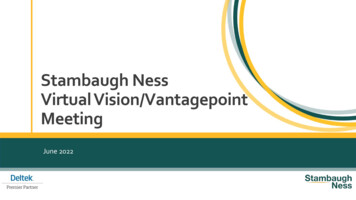
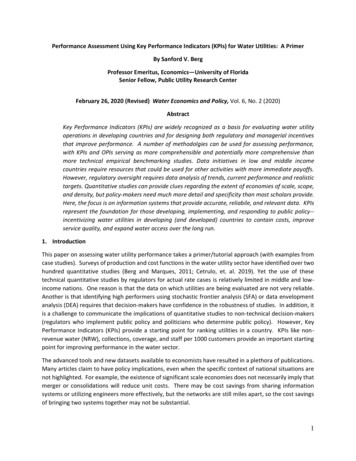
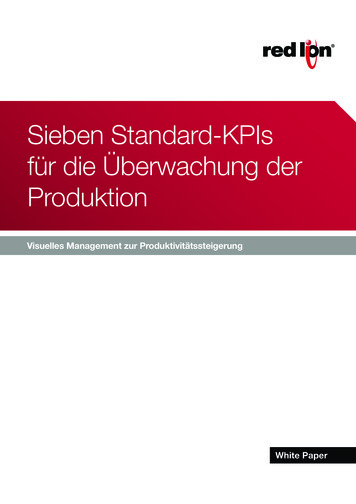
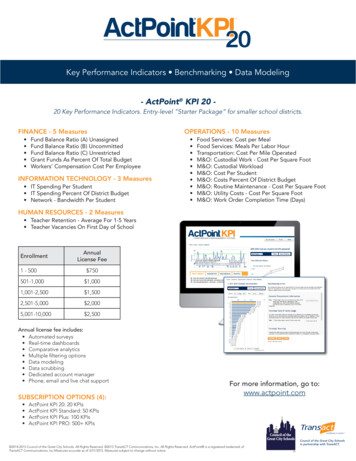
![Service Catalog-Spain.ppt [Modo de compatibilidad]](/img/19/servicecatalog-spain.jpg)



